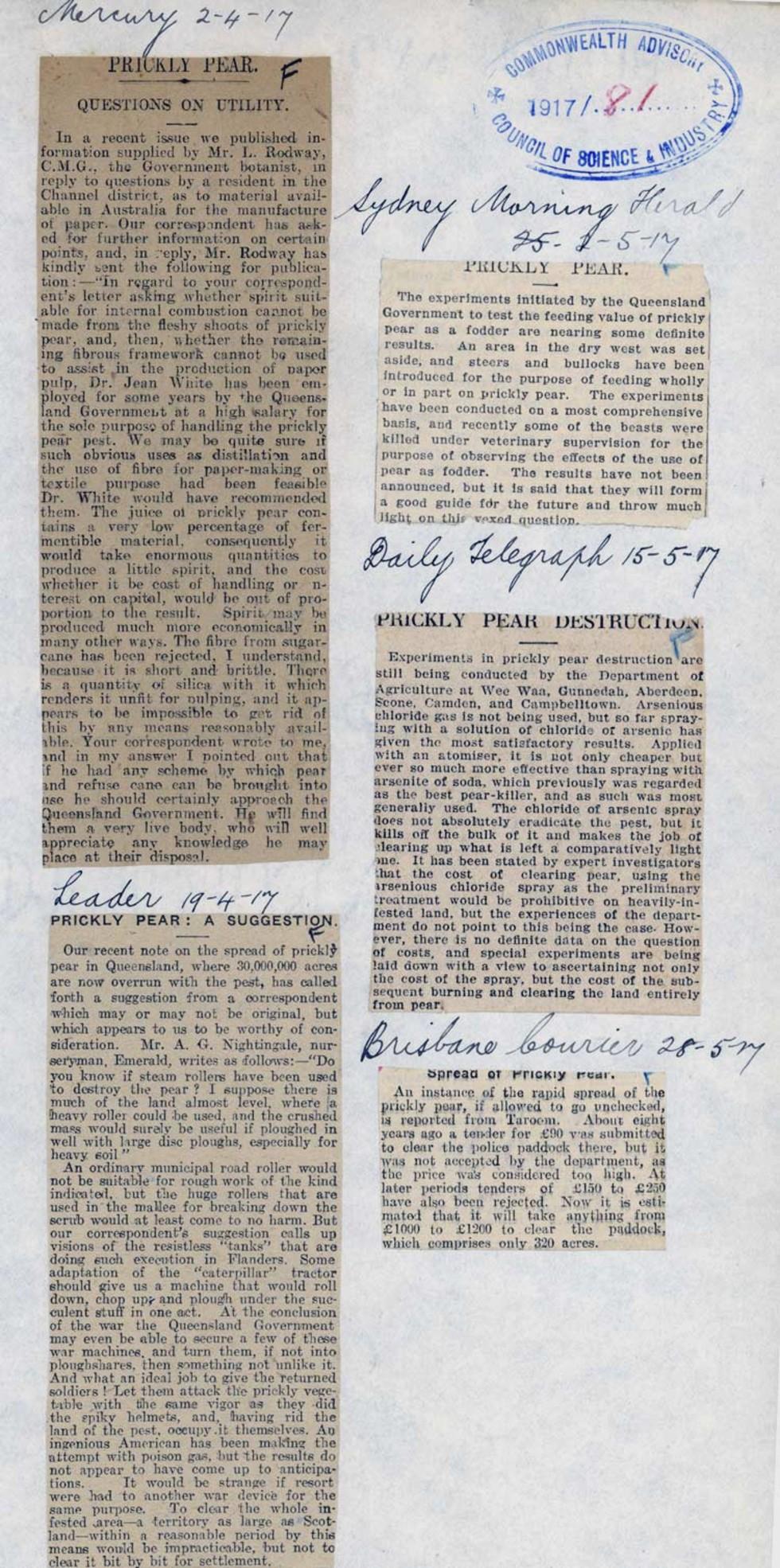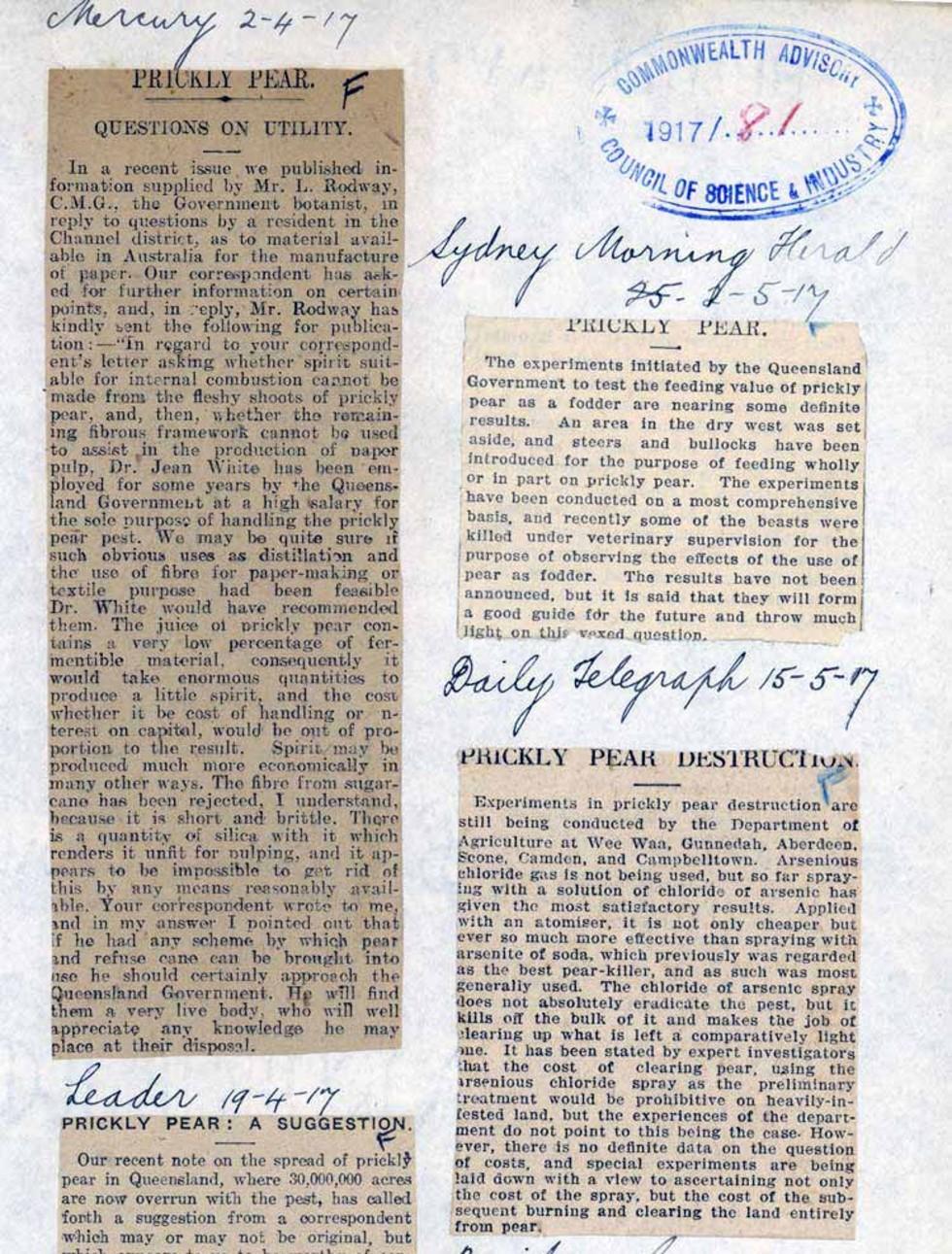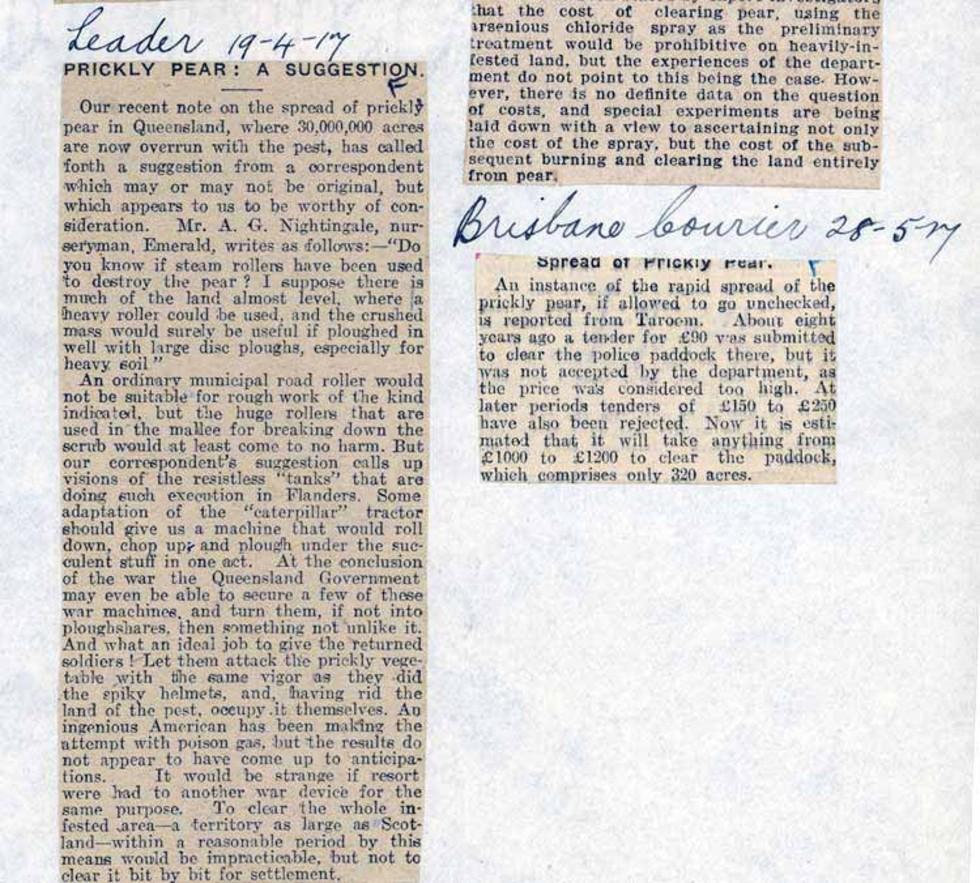
A collection of newspaper cuttings regarding the eradication of prickly pear.

A collection of newspaper cuttings regarding the eradication of prickly pear.

A collection of newspaper cuttings regarding the eradication of prickly pear.



